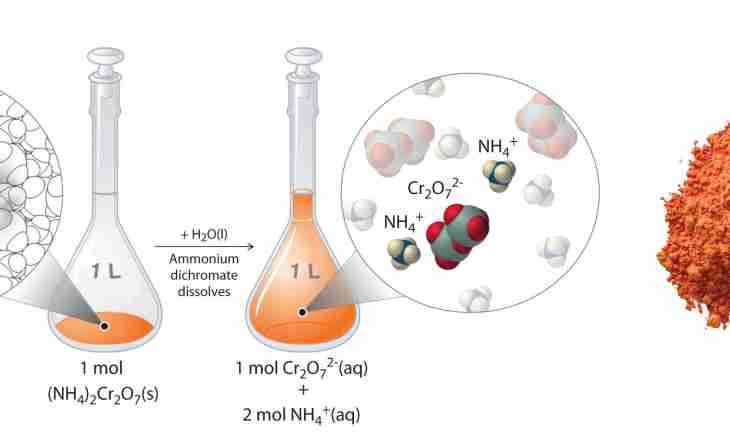Concentration is the size showing what amount of substance is in a certain mass or volume of gas, alloy or solution. The concentration is higher, the more substance contains there. 100% concentration corresponds to pure substance.
Instruction
1. Let's assume, it is about alloy. For example, bronze – copper alloy with tin. Once it had such value that history of a civilization was become by the whole era – "Bronze age". So, you have a bronze detail weighing 1 kg cast from the alloy containing 750 g of copper and 250 g of tin. It is required to find concentration of these substances.
2. Here you will be come to the rescue by the concept "mass fraction", it – "percentage concentration". As it is easily possible to understand from the name, it is expressed by the size characterizing the relation of mass of a component to lump. 750/1000 = 0.75 (or 75%) – for copper, 250/1000 = 0.25 (or 25%) – for tin.
3. And how to be in case of solution? Here, for example, baking soda well familiar to you – bicarbonate of sodium, NaHCO3. Let's assume, 20 g of this substance dissolved in a number of water. Having weighed a vessel with solution, and having subtracted the mass of the vessel, received the mass of solution – 150 g. How it is possible to calculate concentration of solution of bicarbonate of sodium?
4. First, count its mass fraction (or percentage concentration). Divide the mass of substance into solution lump: 20/150 = 0.133. Or, transfer to percent 0.133 * 100 = 13.3%.
5. Secondly, you can calculate its molar concentration, that is count what number of moles of bicarbonate of sodium would be to what 1 mol of this substance is equal. Putting atomic the weight of the elements which are a part of a molecule of bicarbonate of sodium (and without forgetting at the same time about indexes), receive its molar weight: 23 + 1 + 12 + 48 = 84 g/mol.
6. That is, if 1 liter of solution would contain 84 grams of this substance, you would have 1-molar solution. Or, as it is accepted to write down, 1M. And you have 20 grams, besides in smaller volume. Considering that density of water is equal 1, for simplification of calculations accept that the volume of solution is 130 ml (130 + 20 = 150 g, under the terms of a task). Little change of volume at dissolution of salt can be neglected, the error will be insignificant.
7. 130 ml are about 7.7 times less, than 1000 ml. Therefore, if contained in this volume 84/7.7 = 10.91 grams of bicarbonate of sodium, it would be 1M solution. But you have 20 grams of substance, therefore: 20/10.91 = 1.83M. Here such is molar concentration of bicarbonate of sodium in this case.

